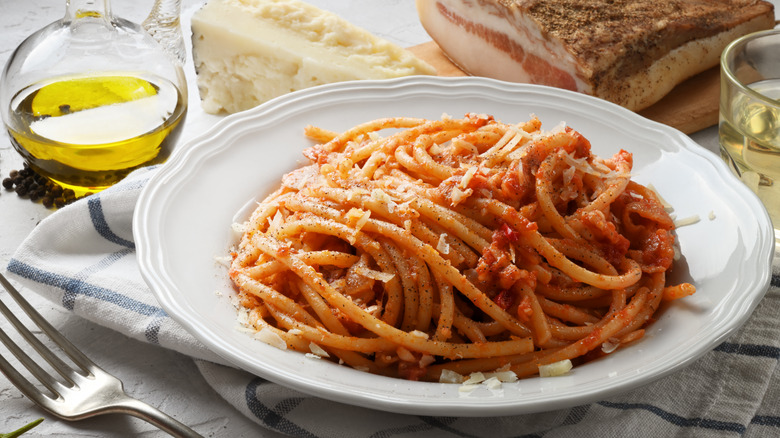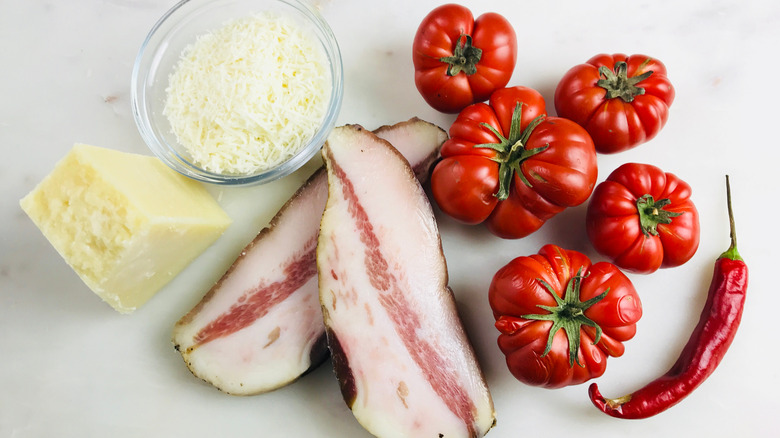The Ingredient Mistake That Complicates Pasta all'Amatriciana
Italians cooks have a seemingly magical touch, transforming the simplest of ingredients into incredibly flavorful dishes. But the secret success behind even the most basic Italian recipes is attention to detail. That said, you don't need to be Roman in order to whip up a mouthwatering pasta all'amatriciana. All you need to do is avoid making one very important ingredient error.
Pasta all'amatriciana is just one of the many "peasant dishes" that are iconic of the Lazio region. Likely the successor of pasta alla gricia, amatriciana is thought to have been created by shepherds using local ingredients derived from the mountainous terroir. As for what those ingredients consisted of, the list is modest. Pecorino, guanciale, and tomatoes would be the traditional building blocks to dress the pasta. Of course, many have also taken creative liberties over the years, adding various ingredients to the mix.
However, while you could add onions or garlic to heighten complexity, add a pinch of chili flakes for an extra kick, or even pour in a splash of wine or vinegar to deglaze, the reality is that all these additions are unnecessary. Not only do they overcomplicate the process, but they tend to mask the dish's intended flavor. To create the most authentic and most delicious amatriciana, it's best to abide by tradition. Working with the original triad of ingredients will consistently guarantee a perfectly balanced amatriciana. Just remember to select ingredients wisely.
Use quality ingredients and use them accordingly
In honoring the original amatriciana recipe, it's best not to make substitutions as this will no doubt affect the final flavor of the dish. That said, fatty, guanciale imparts an intense umami flavor, which is why mild and sweet pancetta or smoky bacon should be avoided. Similarly, when it comes to cheese, Pecorino Romano or Pecorino di Amatrice are the only varieties that should make their way into the recipe. Unlike Parmigiano, Pecorino provides a salty and sharp quality that makes amatriciana all the more cohesive.
While there aren't stringent rules when it comes to which types of tomatoes should be used, there's more of an attention to technique. Often cans of tomato purée or peeled and crushed tomatoes are the norm, however, what's important is the short cooking time as this preserves the fresh, vibrant acidity of the tomatoes. According to the official recipe that's protected by the European Union, the sauce should only simmer for about 10 to 20 minutes until it becomes creamy enough to re-introduce fried strips of guanciale, cooking for another several minutes.
Finally, receiving the honor of being covered in the rich, yet tangy sauce, the classic pasta choice is spaghetti. Bucatini is also common, but even shorter pasta like rigatoni can be used. Of course, when amatriciana is well-executed, the pasta noodle variety won't spark nearly as much controversy as sauce components anyway.

